Investigation on Sensorless Estimating Method and Characteristics of Friction for Ball Screw System
Abstract
:1. Introduction
2. Experimental Setup and Data Collection
- (1)
- Manually adjust the z-axis worktable using the control panel to locate the starting position for the experiment.
- (2)
- Run the application program on the PC104 computer and ensure that the PC104 computer connects successfully to the CNC Fanuc 0i Mate-TD.
- (3)
- Input the number of acquisition data, N, and begin data sampling.
- (4)
- Run the NC program on the CNC Fanuc 0i Mate-TD to perform an idling test.
3. Sensorless Friction Estimation
3.1. Equation of Motion for the Feed Drive System
3.2. Algorithm of Sensorless Friction Estimation
- (1)
- Cubic spline functions are used to interpolate between all of pairs of knots, and , and between and , to yield time-continuous functions for the WP and the SMTC, and , respectively.
- (2)
- The first and second derivatives of the time spline function of the WP are calculated to yield the velocity and acceleration functions of the worktable, and , respectively.
- (3)
- All of the knots, and , are interpolated to yield the position-dependent run time of the worktable, .
- (4)
- The WP is sampled with one mth of the screw lead as the sampling period to yield two arrays of position sampling points, for the forward experiment and for the backward experiment.
- (5)
- The resampling time points, , are determined by using the function and the position sampling point, Z.
- (6)
- The velocity and acceleration for the worktable and the SMTC that correspond to the resampling time points are determined by using the functions , and .
- (7)
- The friction force is calculated from Equation (5).
4. Friction Characteristics Analysis
4.1. Position-Dependent Friction Characteristics
4.1.1. Instantaneous Average Friction
4.1.2. Spectra of Friction Fluctuating Signals
4.2. Velocity-Dependent Friction Characteristics
4.2.1. Effect of the Feed Velocity on the IAFVs
4.2.2. Effect of Feed Velocity on the FFS Spectra
4.3. Discussion
5. Conclusions
Author Contributions
Funding
Conflicts of Interest
References
- Kang, C.M.; Yu, C.; Kuo, Z.; Tie, L.; Li, J.; Yanga, B. Comprehensive compensation method for thermal error of a vertical drilling center. Trans. Can. Soc. Mech. Eng. 2019, 43, 92–101. [Google Scholar] [CrossRef] [Green Version]
- Duan, M.; Lu, H.; Zhang, X.; Zhang, Y.; Li, Z.; Liu, Q. Dynamic Modeling and Experiment Research on Twin Ball Screw Feed System Considering the Joint Stiffness. Symmetry 2018, 10, 686. [Google Scholar] [CrossRef] [Green Version]
- Yuan, W.; Fang, G.; Zhang, X.; Tang, Y.; Wan, Z.; Zhang, S. Heat Transfer and Friction Characteristics of Turbulent Flow through a Circular Tube with Ball Turbulators. Appl. Sci. 2018, 5, 776. [Google Scholar] [CrossRef] [Green Version]
- Armstrong, H.B.; Dupont, P.; Canudasde Wit, C.A. Survey of models, analysis tools and compensation methods for the control of machines with friction. Automatic 1994, 30, 1083–1138. [Google Scholar] [CrossRef]
- Lampacrt, V.; Al-bender, F.; Swevers, J. The generalized maxwell-slip friction model: A novel model for friction simulation and compensation. IEEE Trans. Autom. Control 2005, 50, 1883–1887. [Google Scholar] [CrossRef]
- Karnopp, D. Computer simulation of stick-slip friction in mechanical dynamic systems. Asme J. Dyn. Sys. Meas. Contr. 1985, 107, 100–103. [Google Scholar] [CrossRef]
- Xua, N.; Tanga, W.; Chena, Y.; Baoa, D.; Guob, Y. Modeling analysis and experimental study for the fiction of a ball screw. Mech. Mach. Theory 2015, 87, 57–69. [Google Scholar] [CrossRef]
- Caudasde Wit, C.A.; Olsson, H.; Astrom, K.J. A new model for control of systems with friction. IEEE Trans. Auto. Contr. 1995, 40, 419–425. [Google Scholar] [CrossRef] [Green Version]
- Tjahjowidodo, T.; Al-Bender, F.; Van Brussel, H.; Symens, W. Friction characterization and compensation in electro-mechanical systems. J. Sound. Vib. 2007, 308, 632–646. [Google Scholar] [CrossRef]
- Yeh, S.S.; Su, H.C. Development of friction identification methods for feed drives of CNC machine tools. Int. J. Manuf. Technol. 2011, 52, 263–278. [Google Scholar] [CrossRef]
- Yamada, Y.; Kakinuma, Y. Sensorless cutting force estimation for full-closed controlled ball-screw-driven stage. Int. J. Adv. Manuf. Technol. 2016, 87, 3337–3348. [Google Scholar] [CrossRef]
- Frey, S.; Walther, M.; Verl, A. Periodic variation of preloading in ball screws. Prod. Eng. Res. Devel. 2010, 4, 261–267. [Google Scholar] [CrossRef]
- FANUC, FOCAS1: FANUC Open CNC API Sepcifications version 1-FOCAS1/Ethernet CNC/PMC Data window library. 2003. Available online: http://www.graco.unb.br/alvares/romi/Focas1/Disk2/Doc/FWLIB32.htm (accessed on 1 January 2016).
- Álvares, A.J.; Ferreira, J.C.E. WebTurning: Teleoperation of a CNC turning center through the Internet. J. Mater. Process. Technol. 2006, 179, 251–259. [Google Scholar] [CrossRef]
- Satito, K.; Kamiyama, K.; Ohmea, T.; Matsuda, T. A microprocessor-controlled speed regulator with instantaneous speed estimation for motor drives. IEEE Trans. Ind. Electron. 1988, 35, 95–99. [Google Scholar] [CrossRef]
- Brown, R.H.; Sechneider, S.C.; Mulligan, M.G. Analysis of algorithms for velocity estimation from discrete position versus time data. IEEE Trans. Ind. Electron. 1992, 39, 11–19. [Google Scholar] [CrossRef]
- Hou, C.J.; Ceng, Y.S.; Wu, D.Q. Global Continuous Curve Fitting Method of Piecewise Least Square Fitting with Global Continuity. J. Chongqing Norm. Univ. (Nat. Sci.) 2011, 28, 44–48. [Google Scholar]
- Hung, J.P.; James, S.S.; Jerry, J. Impact failure analysis of re-circulating mechanism in ball serew. Eng. Fail. Anal. 2004, 11, 561–573. [Google Scholar] [CrossRef]
- Ispaylar, M.H. Betriebseigenschafen von Profilschienen Wälzführungen; CompuTEAM: Somerset, UK, 1996; pp. 116–124. [Google Scholar]
- Liu, Q. The differences between the mean of fluorescence parameter and parameter value of average curve of fast chlorophyll a fluorescence induction curves. For. Sci. Technol. 2015, 40, 10–14. [Google Scholar]
- Xi, X.C.; Poo, A.N.; Hong, G.S. Tacking error-based static friction compensation for a bi-axial CNC machine. Precis. Eng. 2010, 480–488. [Google Scholar] [CrossRef]
- Grace, A. Optimization Toolbox for Use with MATLAB User’s Guide; The MathWorks Inc.: Natick, MA, USA, 1994. [Google Scholar] [CrossRef]

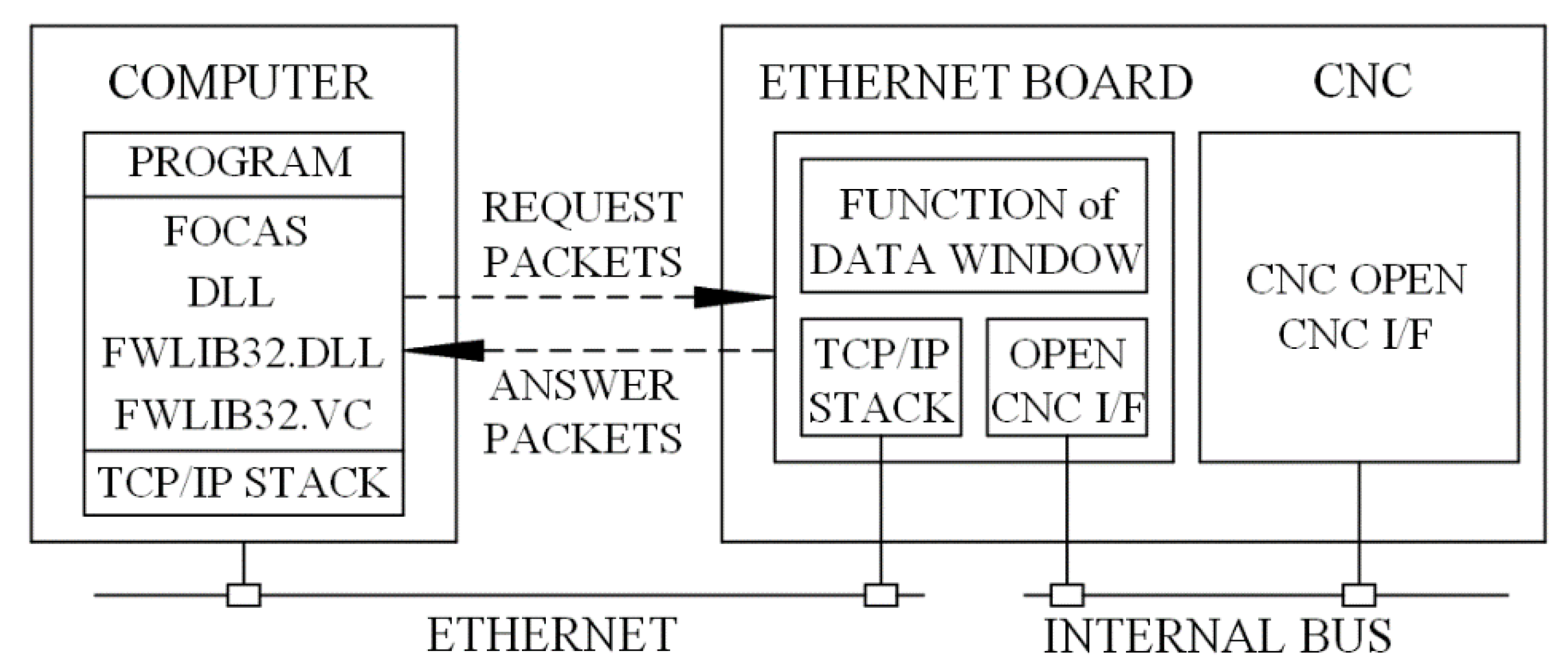

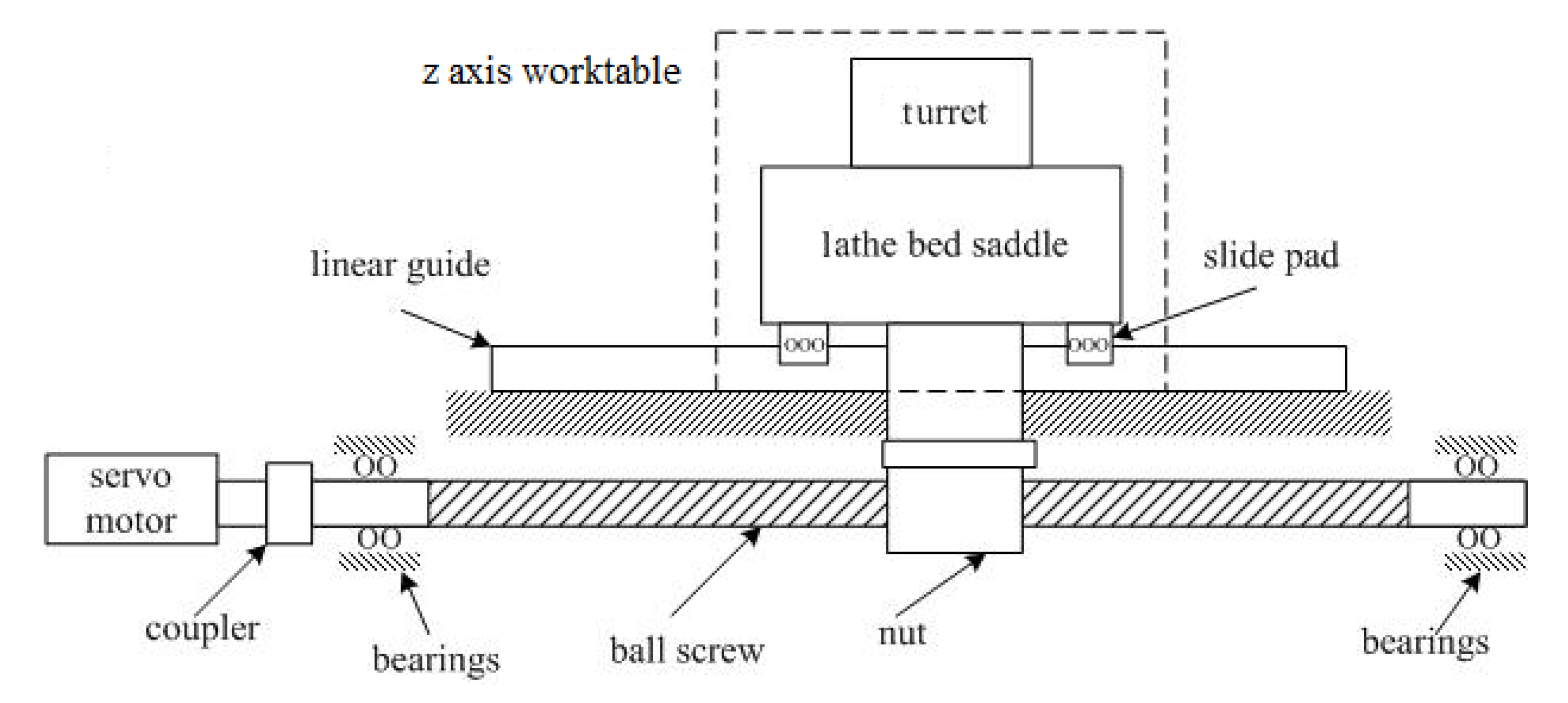
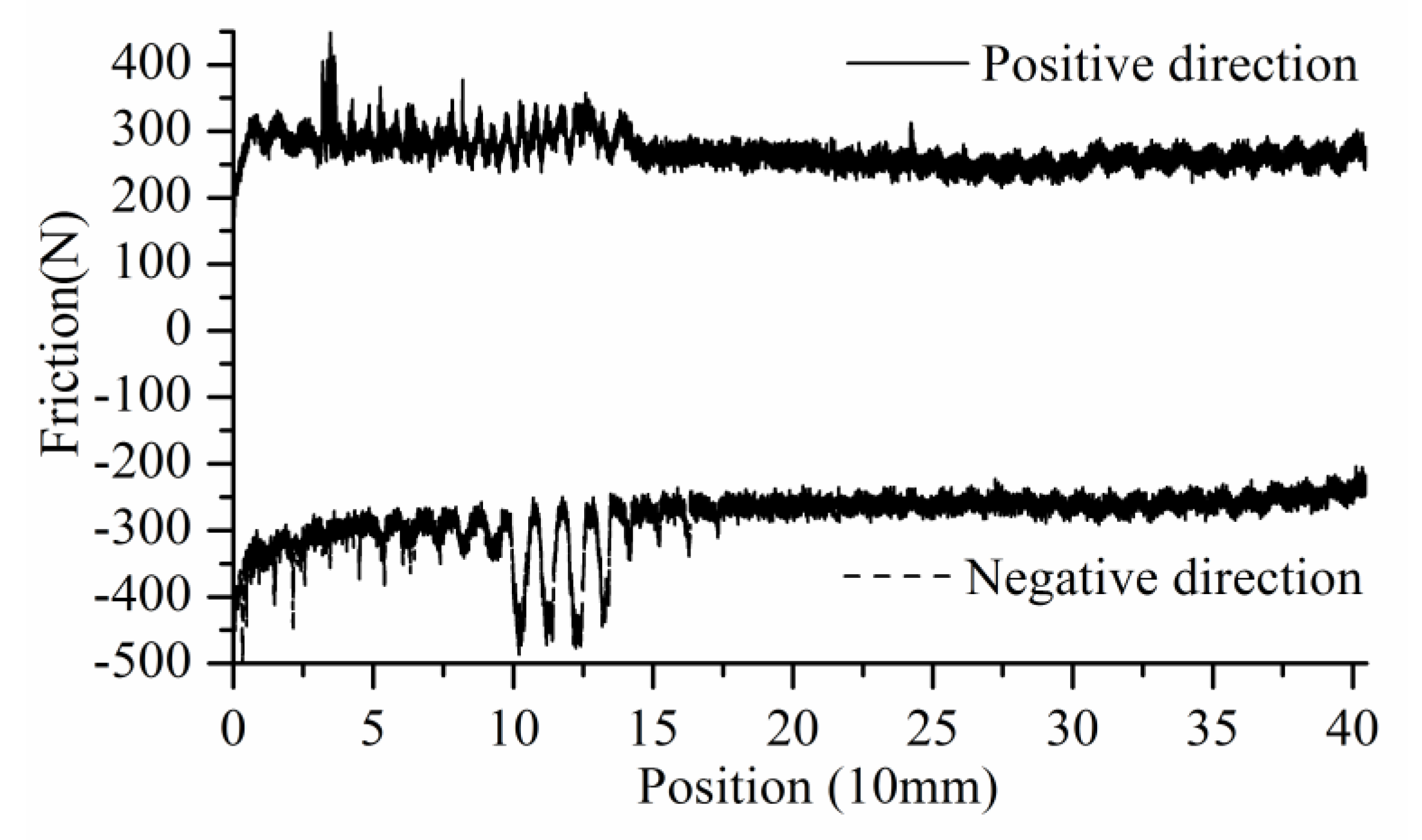
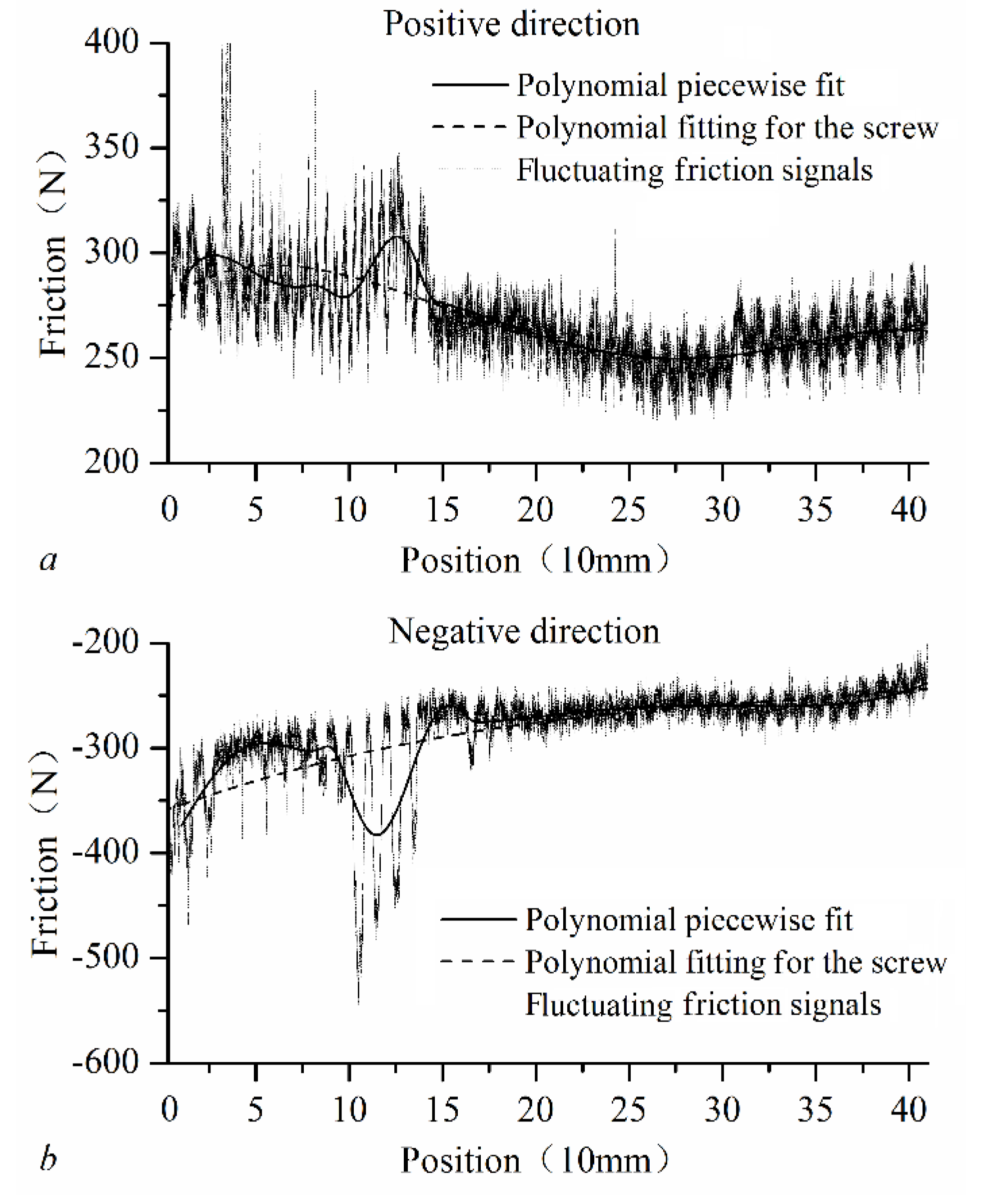


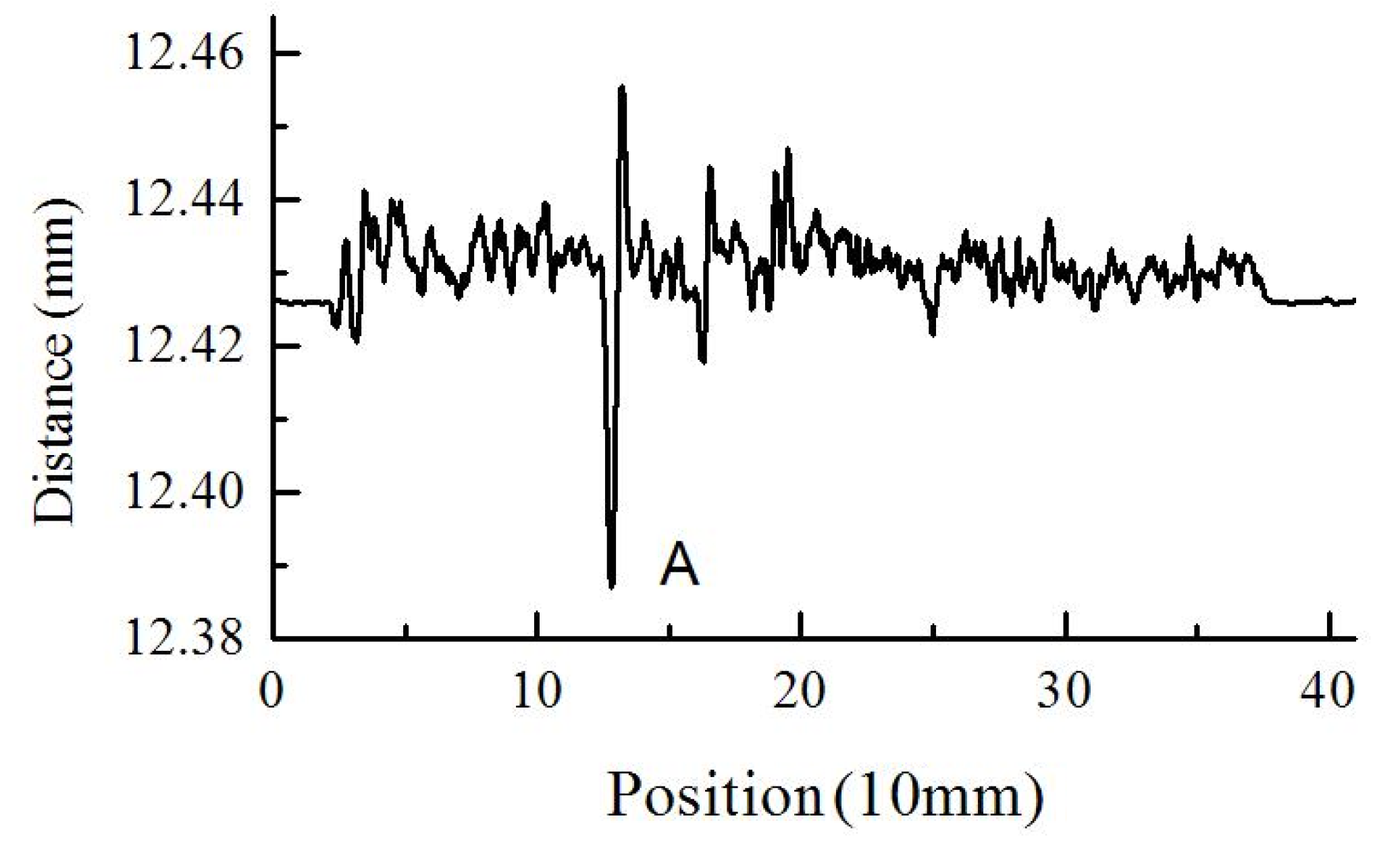
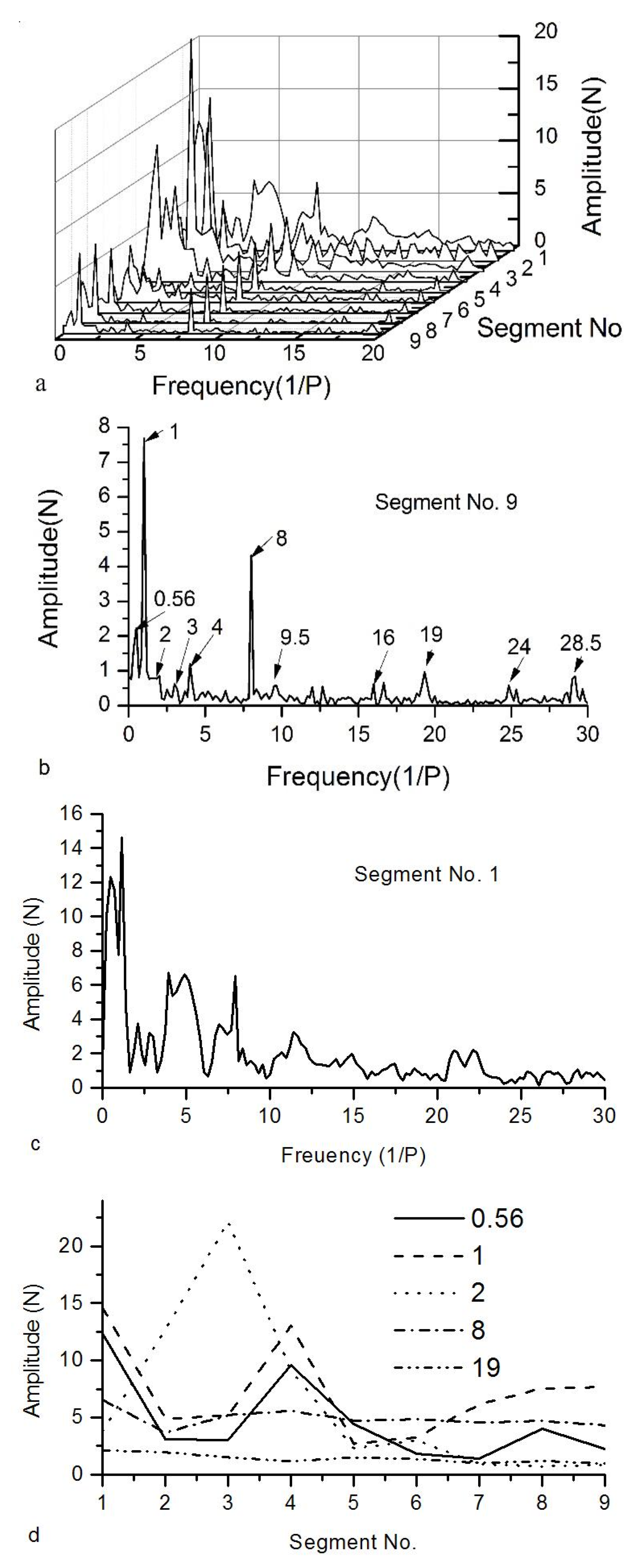



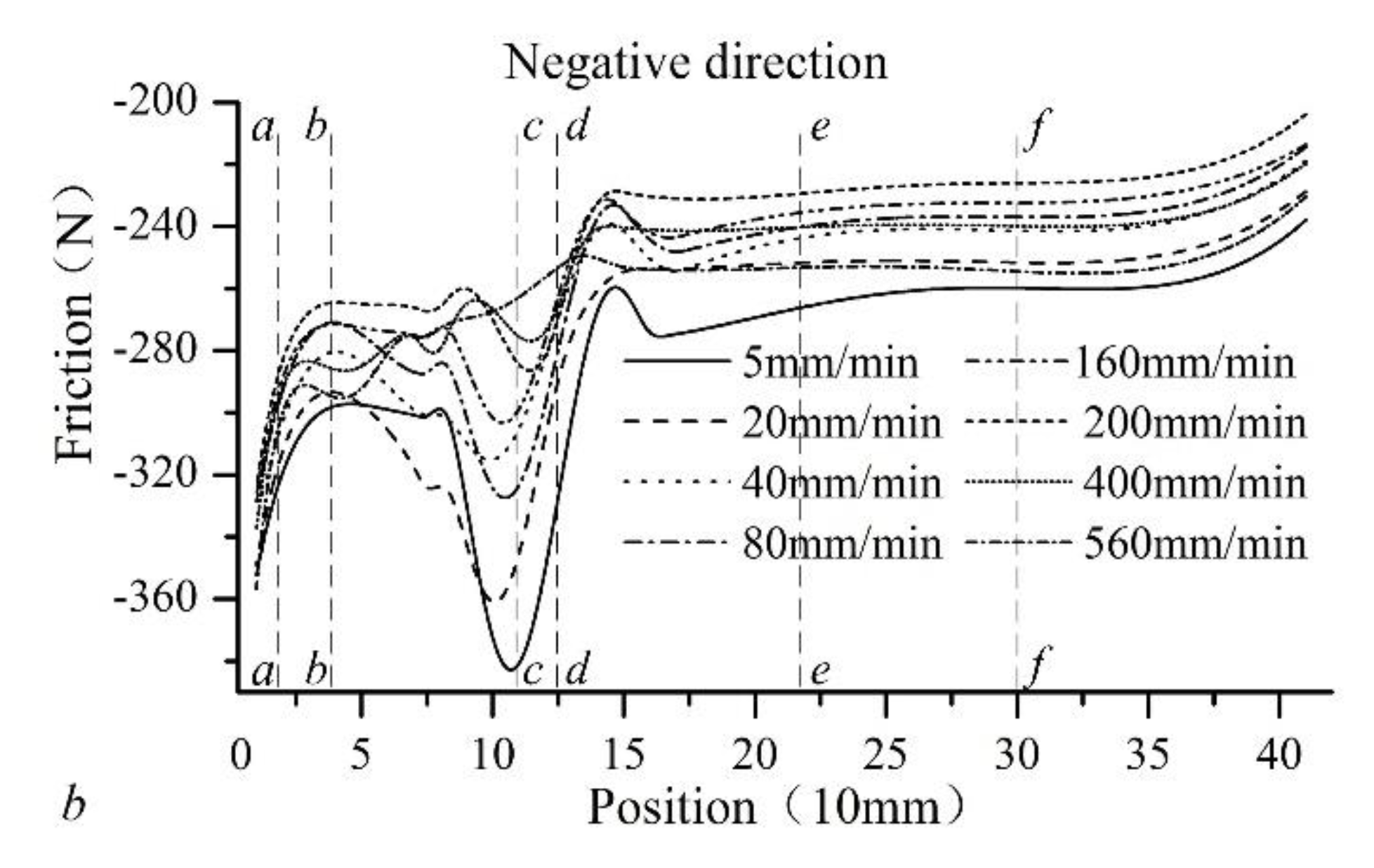
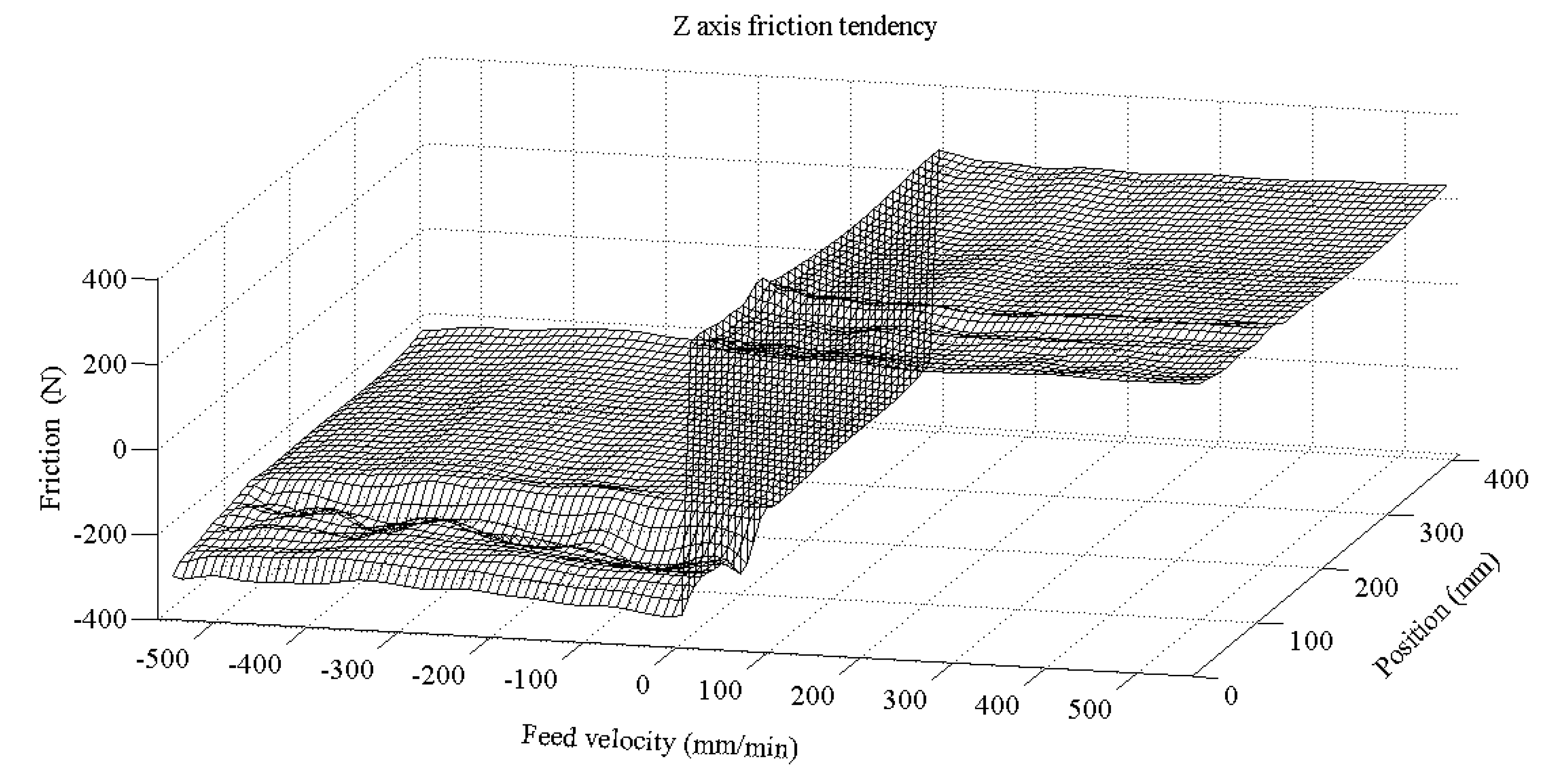
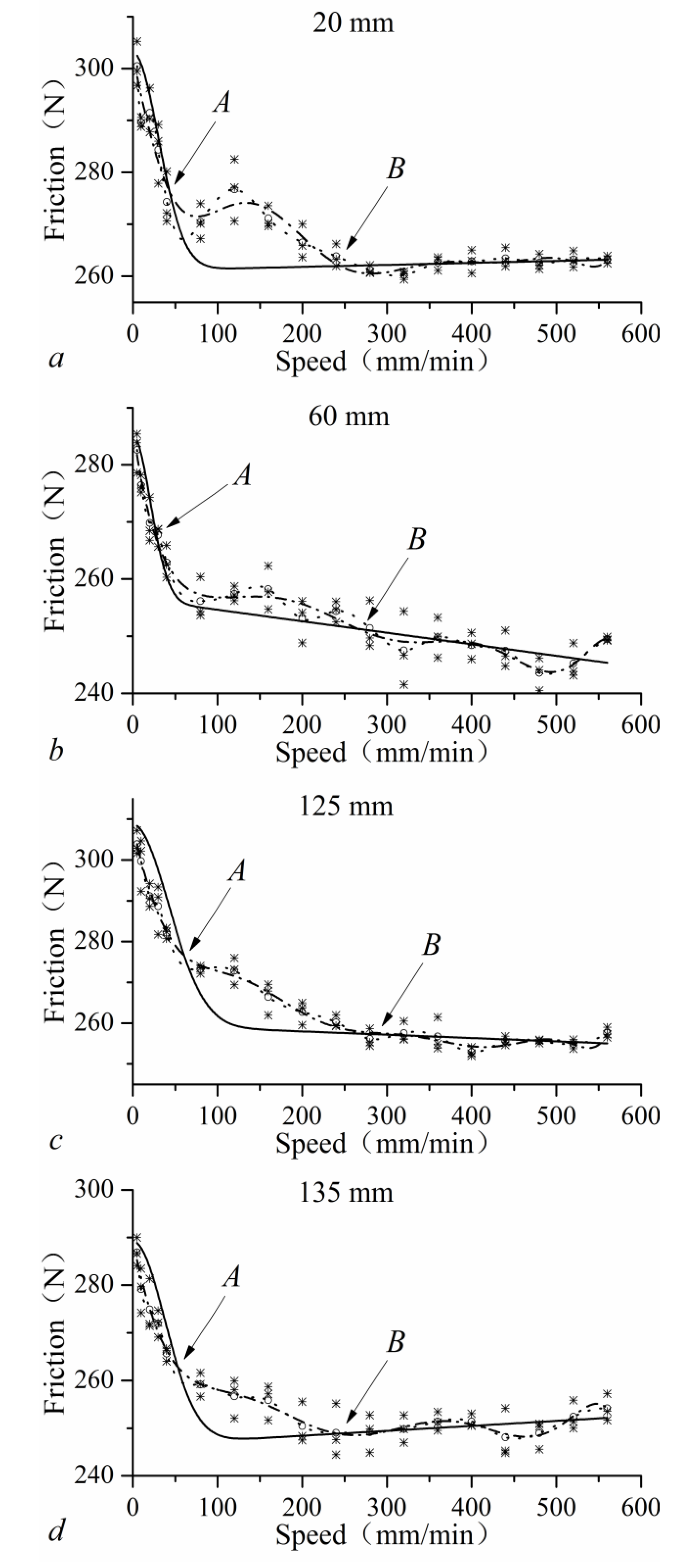



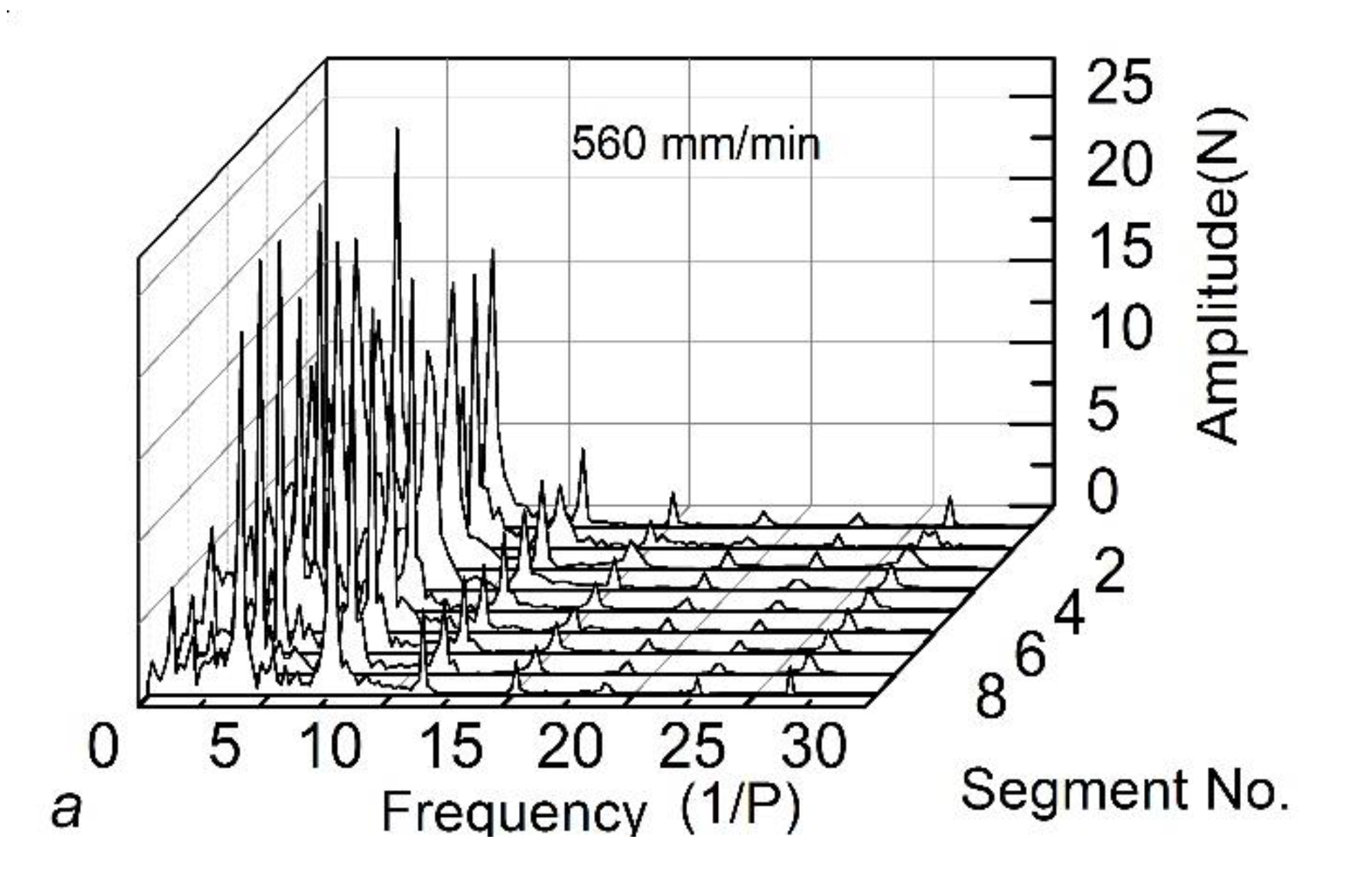
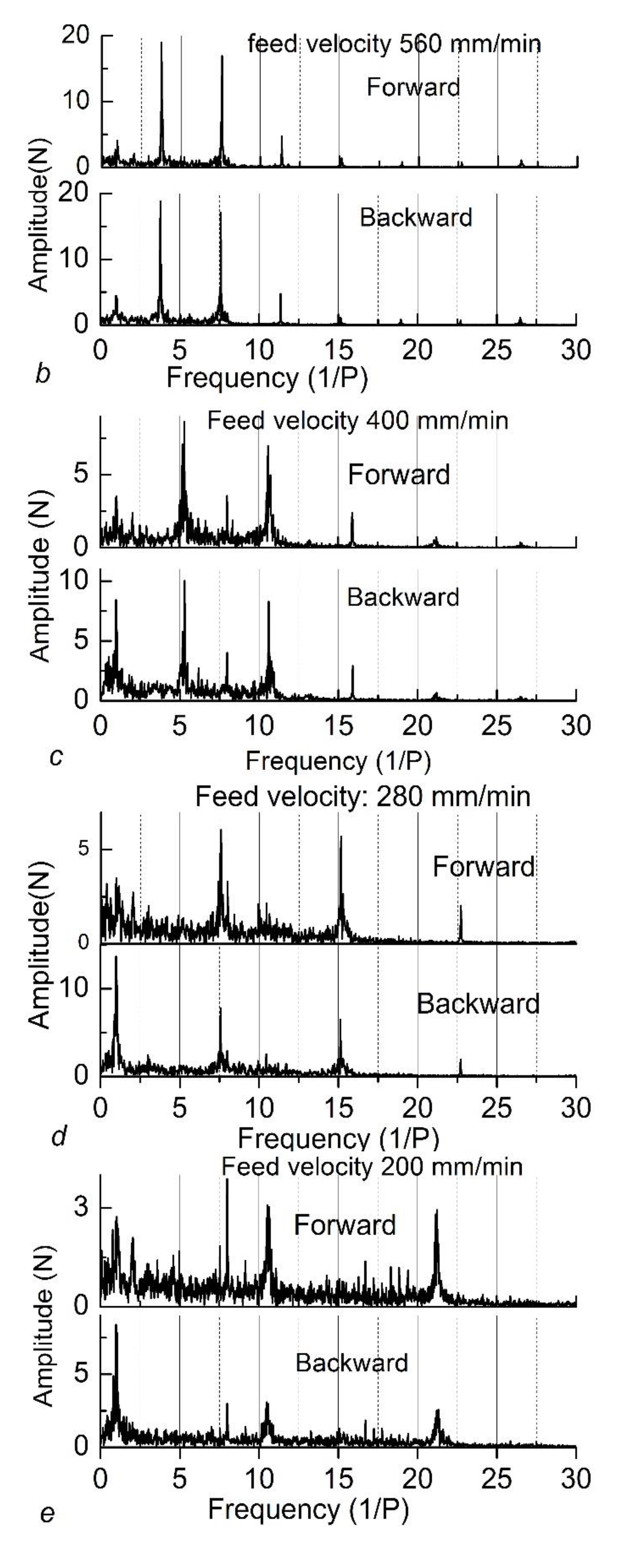
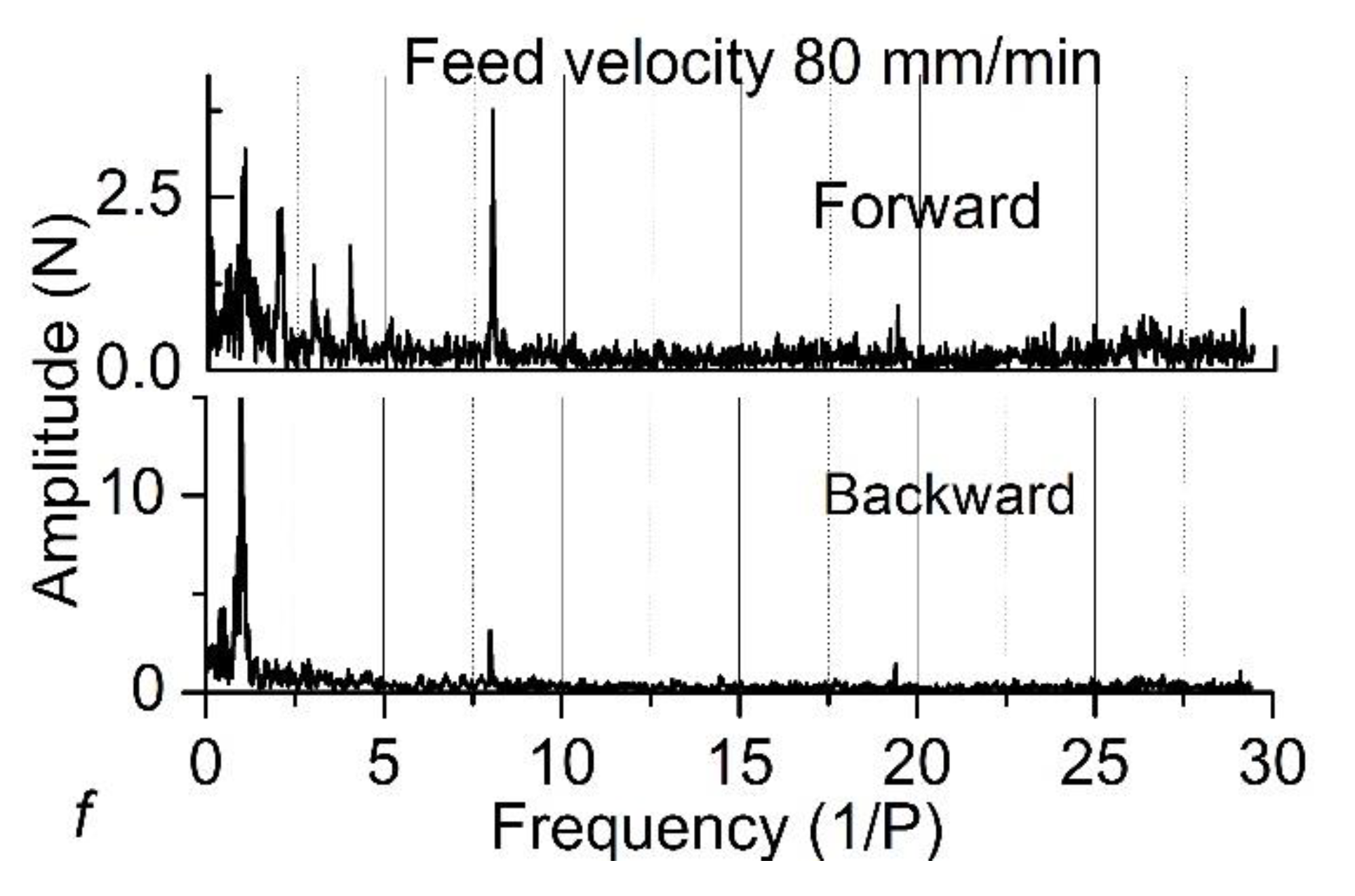
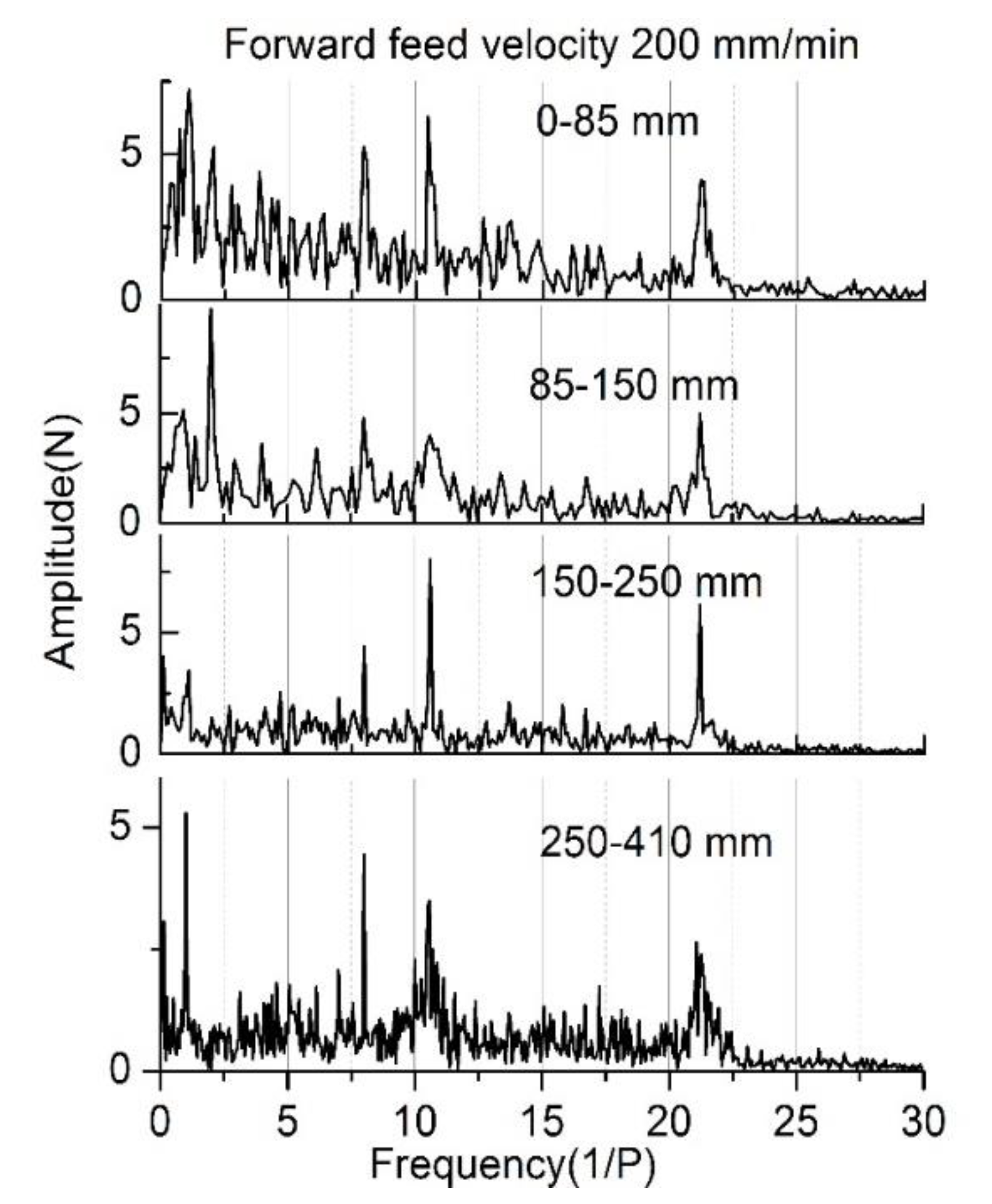
| Parameters | Value | Unit | |
|---|---|---|---|
| Lathe | Worktable mass | 425 | kg |
| Screw lead | 10 | mm | |
| Ball diameter of lead screw | 5.56 | mm | |
| Ball diameter of linear guideway | 5.56 | mm | |
| Number of balls for the guideway in a raceway | 19 | ||
| Return position Z0 | 410 | mm | |
| Return position Z1 | 0 | mm | |
| Servomotor | Type | β12/3000is | |
| Torque coefficient | 1.82 | Nm/A |
| Order | 1 | 2 | 3 | 4 | 5 | 6 |
|---|---|---|---|---|---|---|
| Positive | 19.1 | 18.4 | 17.1 | 16.8 | 17.0 | 17.5 |
| Negative | 31.8 | 30.6 | 30.0 | 29.65 | 31.2 | 29. 6 |
| Symbol | a-a | b-b | c-c | d-d | e-e | f-f |
|---|---|---|---|---|---|---|
| Positive (mm) | 20 | 60 | 125 | 135 | 200 | 300 |
| Negative (mm) | 20 | 40 | 110 | 125 | 220 | 300 |
© 2020 by the authors. Licensee MDPI, Basel, Switzerland. This article is an open access article distributed under the terms and conditions of the Creative Commons Attribution (CC BY) license (http://creativecommons.org/licenses/by/4.0/).
Share and Cite
Chen, Y.; Zhang, S.; Zhang, Y.; Lu, Z.; Zhao, C. Investigation on Sensorless Estimating Method and Characteristics of Friction for Ball Screw System. Appl. Sci. 2020, 10, 3122. https://doi.org/10.3390/app10093122
Chen Y, Zhang S, Zhang Y, Lu Z, Zhao C. Investigation on Sensorless Estimating Method and Characteristics of Friction for Ball Screw System. Applied Sciences. 2020; 10(9):3122. https://doi.org/10.3390/app10093122
Chicago/Turabian StyleChen, Ye, Siyu Zhang, Yanzhou Zhang, Zechen Lu, and Chunyu Zhao. 2020. "Investigation on Sensorless Estimating Method and Characteristics of Friction for Ball Screw System" Applied Sciences 10, no. 9: 3122. https://doi.org/10.3390/app10093122






